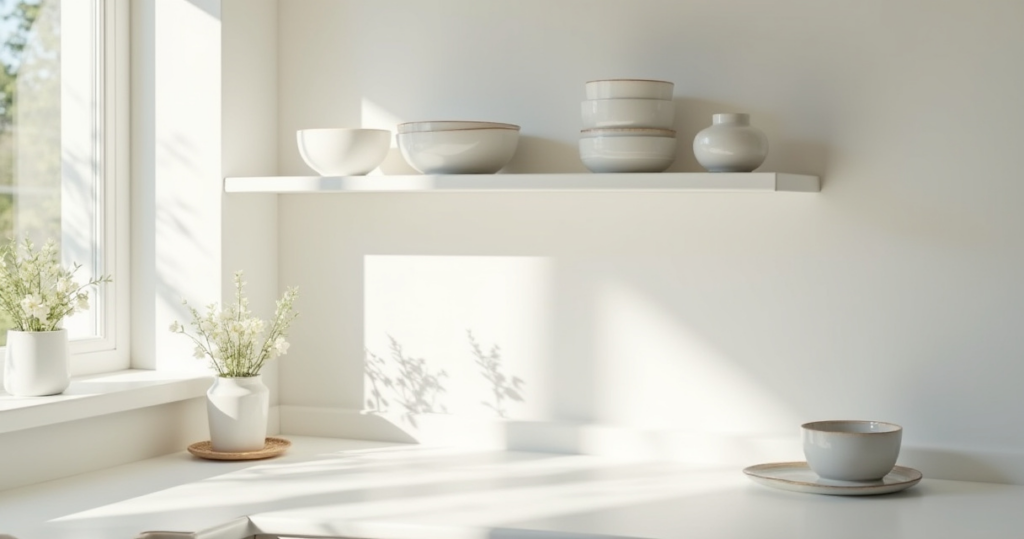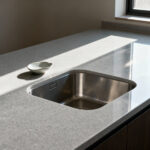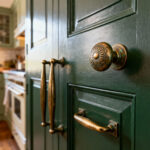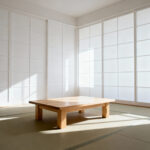I’ve noticed something strange about how we discuss small kitchens. People always ask me, “How can I fit more stuff in?” They talk about clever hacks and storage Tetris, treating the space like a puzzle to be won. But this is the wrong question. It comes from a place of scarcity, of lack. The real question is not how to fit more, but how to live more fully with what is essential.
The greatest misconception about Japanese design is that it is about emptiness. It is not. It is about the meaning of what remains. We call this concept ma—the purposeful void, the pause between notes that makes the music beautiful. A small kitchen is not a curse. It is an invitation to practice ma. It forces you to be intentional, to choose only what has beauty and purpose.
The noise is all the online chatter about cramming more things into clever contraptions. It is the belief that a good kitchen is one filled with gadgets for every conceivable task. The truth? Most of those things just gather dust and agitate the spirit. A kitchen should be a place of calm creation, a dojo for nourishment. I once worked with a client whose tiny kitchen was overflowing. She had three different kinds of spiralizers. We removed almost everything, keeping only a few beautiful, well-made tools she used daily. Suddenly, the kitchen could breathe. And so, she told me, could she.
Let’s not “maximize” your space. Let’s harmonize it.
Foundational Planning for a Spacious Feel (Part 1)
Before a single decorative object is considered, we must first shape the space itself. This is the foundation—the preparation of the canvas. The goal here is not merely to organize but to create a sense of serenity and flow. Think of it as a meditation, preparing the ground for what is to come.
1. Execute a Deep Decluttering Prioritization
This is not tidying up. This is a ritual of discernment. Most will tell you to sort items into boxes, but they miss the soul of the act. The real work is to hold each object—every chipped mug, every redundant spatula—and ask if it truly serves your life now. Does it bring you ease, or does it bring you the subtle anxiety of clutter? This is not about deprivation, but about honoring your space by allowing only the deserving to remain.
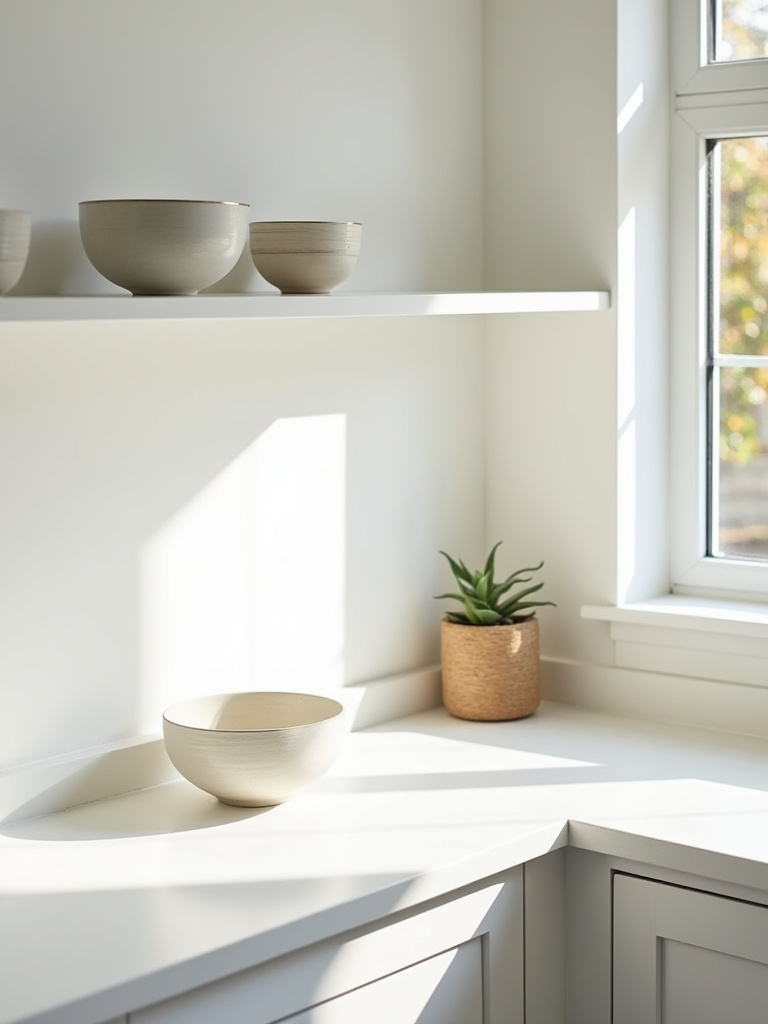
Release what is no longer essential. Thank it for its service, and let it go. When you are done, your kitchen will feel lighter, not because it is empty, but because everything within it has a purpose and a place. The “shortcut” here is to be ruthless in your kindness to yourself. A calm mind is worth more than a gadget you use once a year.
With the excess cleared, the true character of the space begins to reveal itself. Now we can look up, and see the potential that was previously hidden.
2. Assess All Available Vertical Space Potential
In the West, we often live on a horizontal plane, our eyes fixed at a predictable level. But in traditional Japanese architecture, the vertical is revered. It draws the eye and the spirit upward, creating a sense of expansiveness even in a modest room. Your small kitchen has this same potential. The walls are not simply barriers; they are opportunities for elevation.
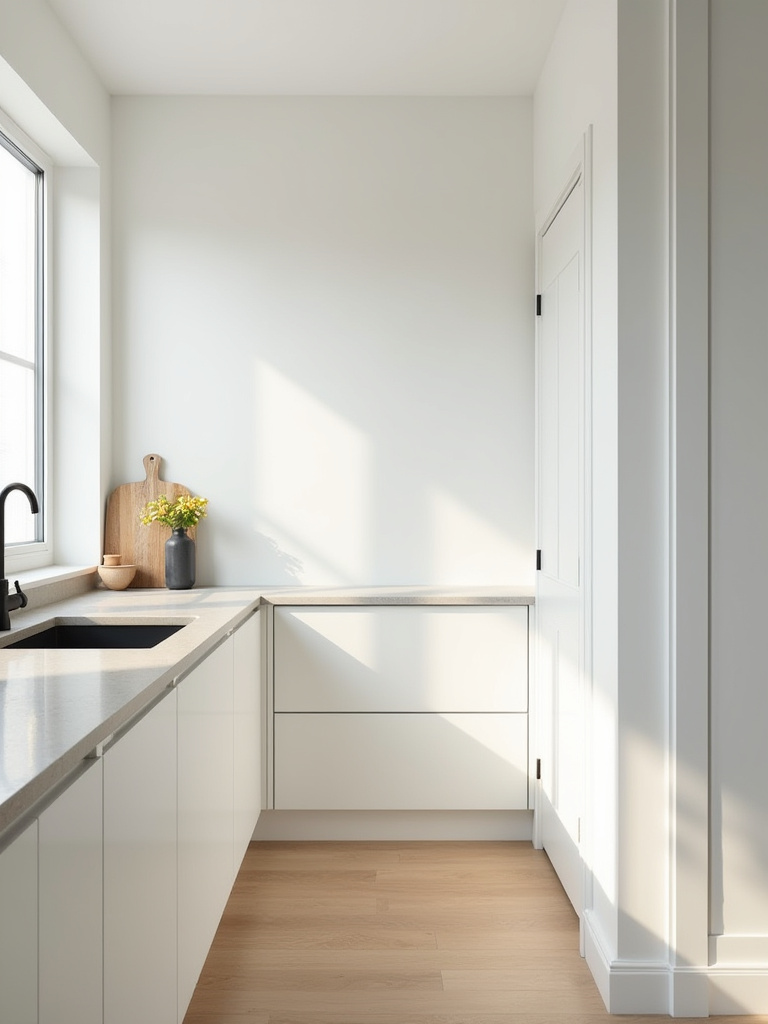
Consider simple, clean-lined floating shelves made of a light, natural wood. They do more than hold your dishes; they create lines that guide the eye, making the ceiling feel higher. A wall-mounted pegboard is not just storage; it is a flexible, living composition that you can change with your needs and seasons, a perfect expression of impermanence and utility.
As we guide the eye upward, we must also consider the light it finds there. The interplay of light and shadow is what gives a space its life.
3. Develop a Cohesive Light Color Palette Strategy
Many believe a light color palette makes a room look bigger. This is true, but it is an incomplete truth. The deeper purpose is to create a canvas for light. A kitchen painted in soft, neutral tones—creamy off-whites, pale stone greys, the color of wet sand—does not just reflect light; it breathes with it. It captures the cool blue of morning, the warm gold of afternoon, and the soft glow of a single lamp at night.
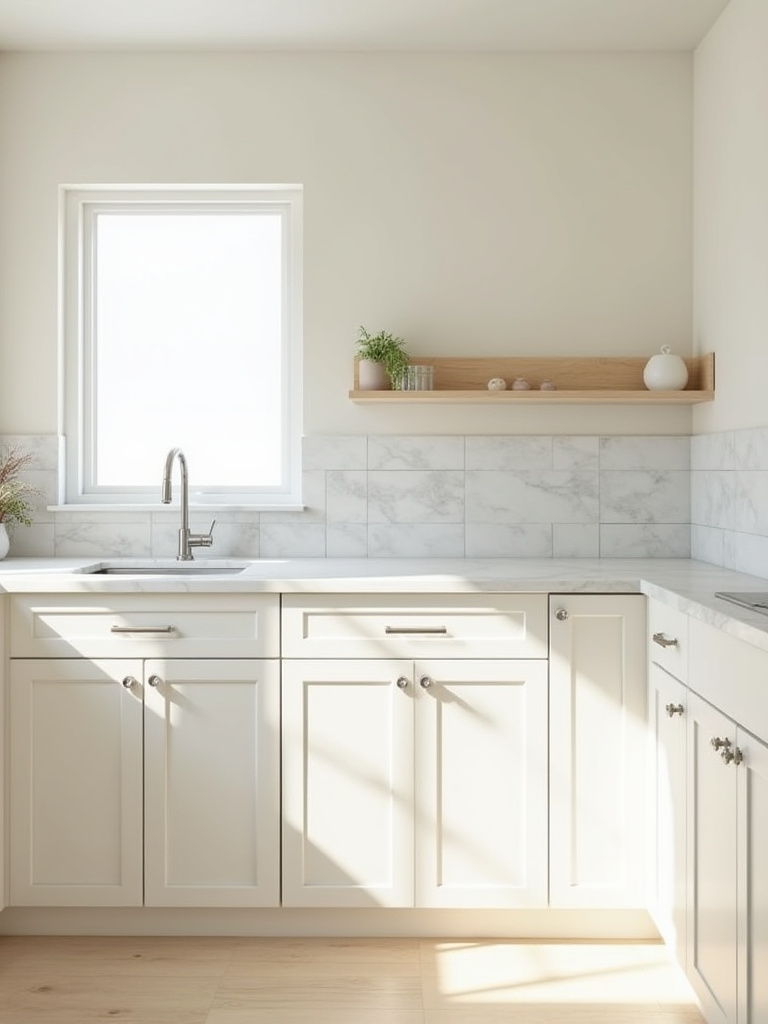
Avoid a sterile, gallery-white that feels cold and lifeless. Instead, choose colors with subtle depth and texture. Think of the different shades within a single piece of rice paper. By using a cohesive, gentle palette on walls, cabinets, and even countertops, you erase the hard visual boundaries that make a room feel small. The space becomes a single, flowing entity.
With a harmonious backdrop of light, the objects we place within it take on greater significance. Let us choose them with this in mind.
4. Plan for Multi-functional Furniture Solutions
An object with a single, unyielding purpose can feel demanding in a small space. But an object that can transform itself possesses a kind of quiet wisdom. This is the essence of multi-functional design. It is not about clever mechanics; it is about respecting an object’s potential to adapt and serve in multiple ways.
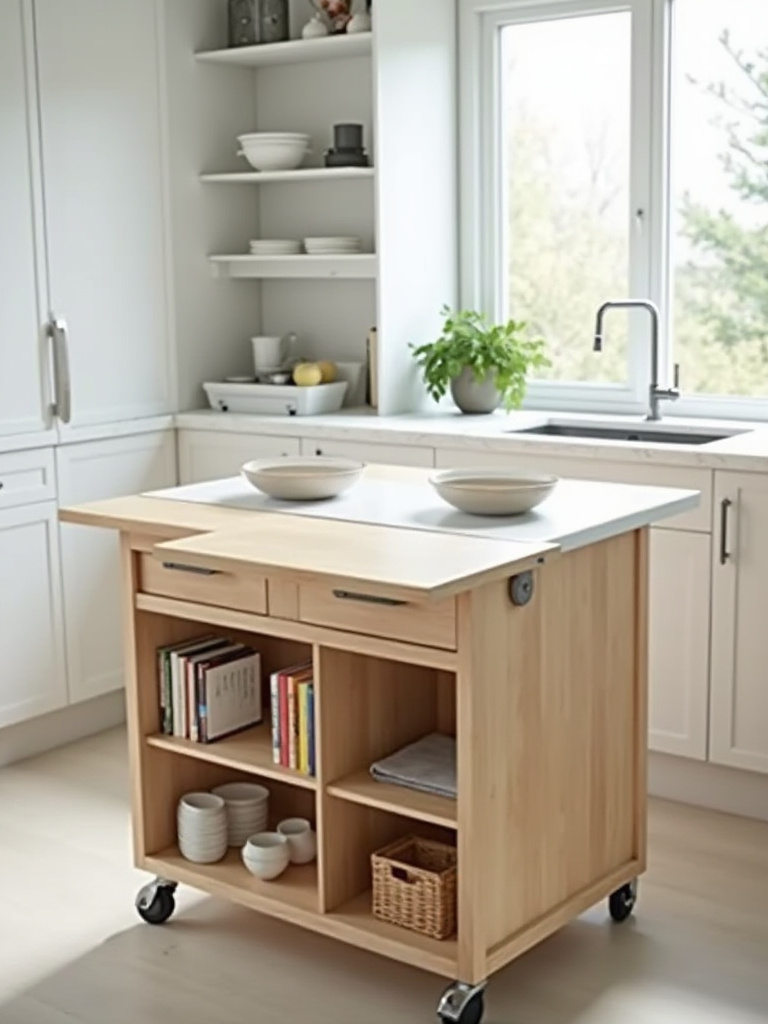
A small island on casters can be a prep surface one moment, a dining table the next, and then be wheeled aside to create open space. A simple dining bench against a wall can offer seating, while its hollow core stores linens or rarely used items. In choosing these pieces, you are choosing flexibility over rigidity, flow over permanence. This allows your kitchen to change as your needs for the day change.
The foundation is now laid. The space has been cleared, lifted, and illuminated. Now we can add the touches that trick the eye and delight the spirit.
Foundational Planning for a Spacious Feel (Part 2)
Here, we move from the broad strokes of color and form to the more subtle arts of illusion and reflection. These are the details that create a profound sense of depth and life.
5. Integrate Reflective Surfaces to Expand Sightlines
A mirror is not simply an object for viewing oneself. In design, it is a tool for borrowing space. Like a still pond in a garden reflecting the sky, a reflective surface in a kitchen brings light and scenery into a space where it did not exist before. It doubles the light from a window or the soft glow of a lamp, banishing shadows and creating an endless sense of depth.
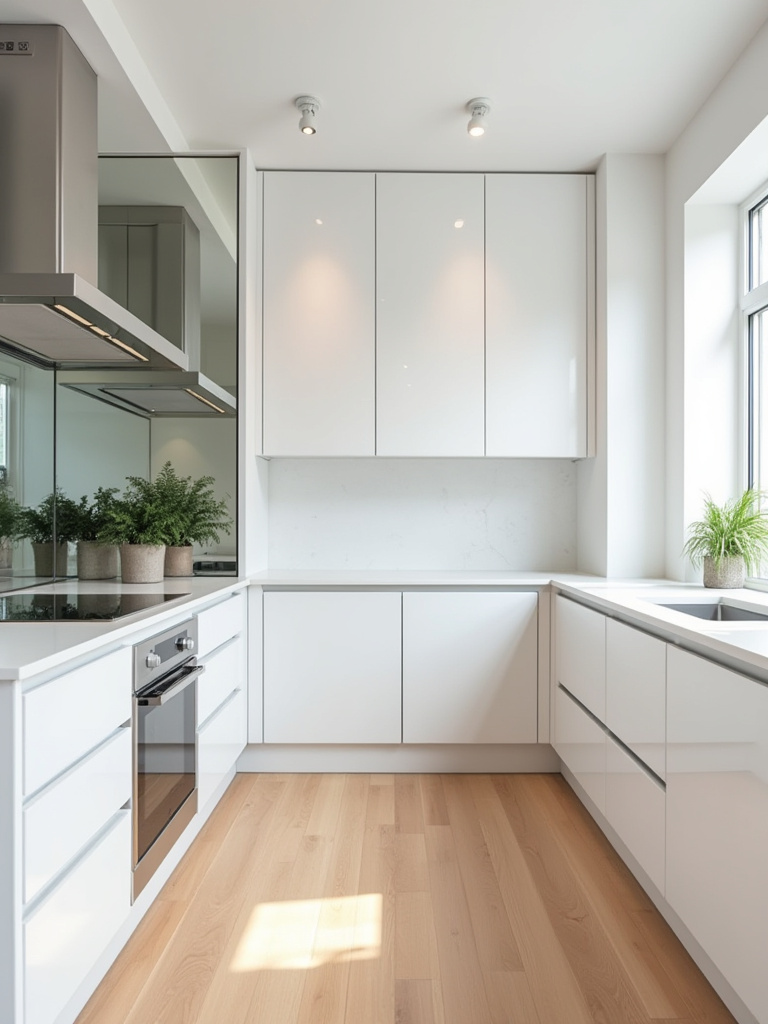
Consider a backsplash of polished, subtly tinted glass or a cabinet door with a mirrored panel. It doesn’t need to be a perfect, sharp reflection. A slightly antiqued or smoked mirror adds character and softens the effect, creating what we call yūgen—a subtle, profound grace. This isn’t about vanity; it’s about using reflection to make the physical boundaries of your room feel boundless.
Having shaped the perception of the space, we now turn to the tools within it. How can they exist in harmony without creating clutter?
Smart Storage & Appliance Selection Strategies (Part 1)
This is where intention meets daily life. The items we choose to cook with and the way we store them can either contribute to a feeling of chaos or one of serene order. The goal is effortless access and visual calm.
6. Optimize Walls with Floating Shelves and Pegboards
Many see open shelves and fear clutter. This is because they think of them as a place to put things. Instead, think of them as a canvas for composing things. This is the art of shitsurai, or arrangement. Place only your most beautiful and most-used items here: a simple stack of white ceramic bowls, a row of glass jars containing grains, a single handmade mug. The empty space around the objects is as important as the objects themselves.
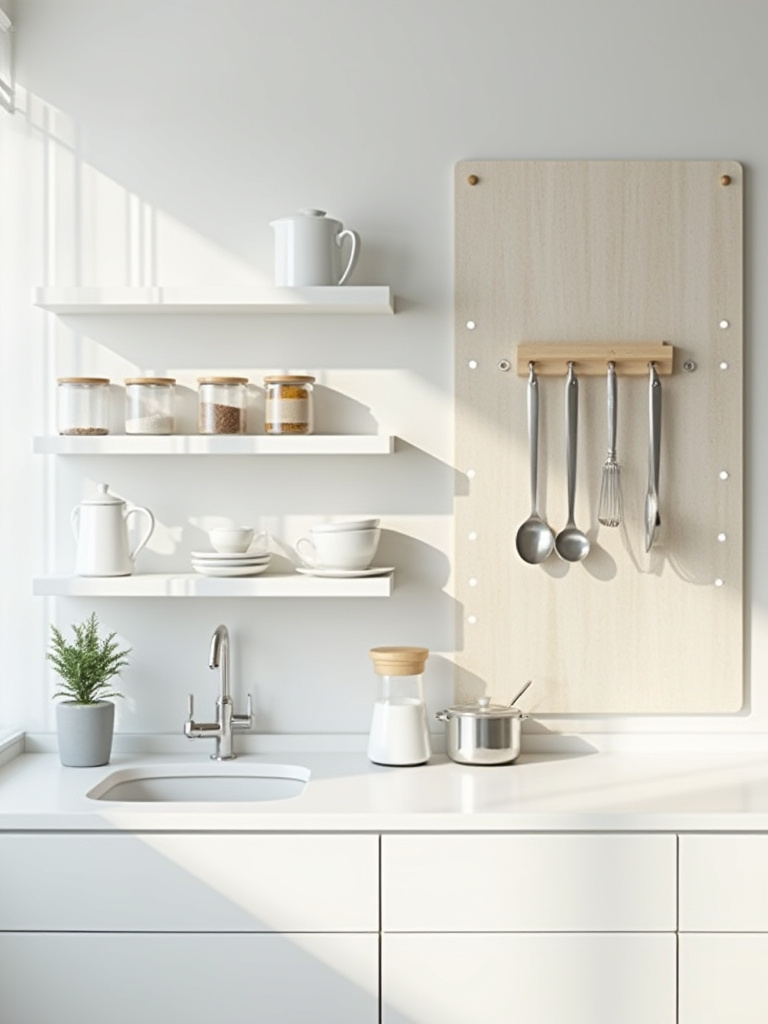
A pegboard embodies the principle of adaptability. It is a system, not a static solution. You can arrange your tools for the season—perhaps your soup ladle and spice jars are more prominent in winter. This makes your storage a living, breathing part of your kitchen, reflecting your daily rhythms rather than trapping you in a fixed system.
What is seen must be beautiful. But what is unseen must be orderly, for the sake of your own peace of mind.
7. Install Pull-Out Pantries for Accessible Storage
The deep, dark cabinet is a source of anxiety. It is where forgotten things go to expire. A pull-out pantry transforms this experience. It is a simple mechanism, but a profound one. With a gentle pull, the hidden is revealed. Everything is brought into the light, visible and accessible. There are no lost corners, no archaeological digs for a tin of tomatoes.
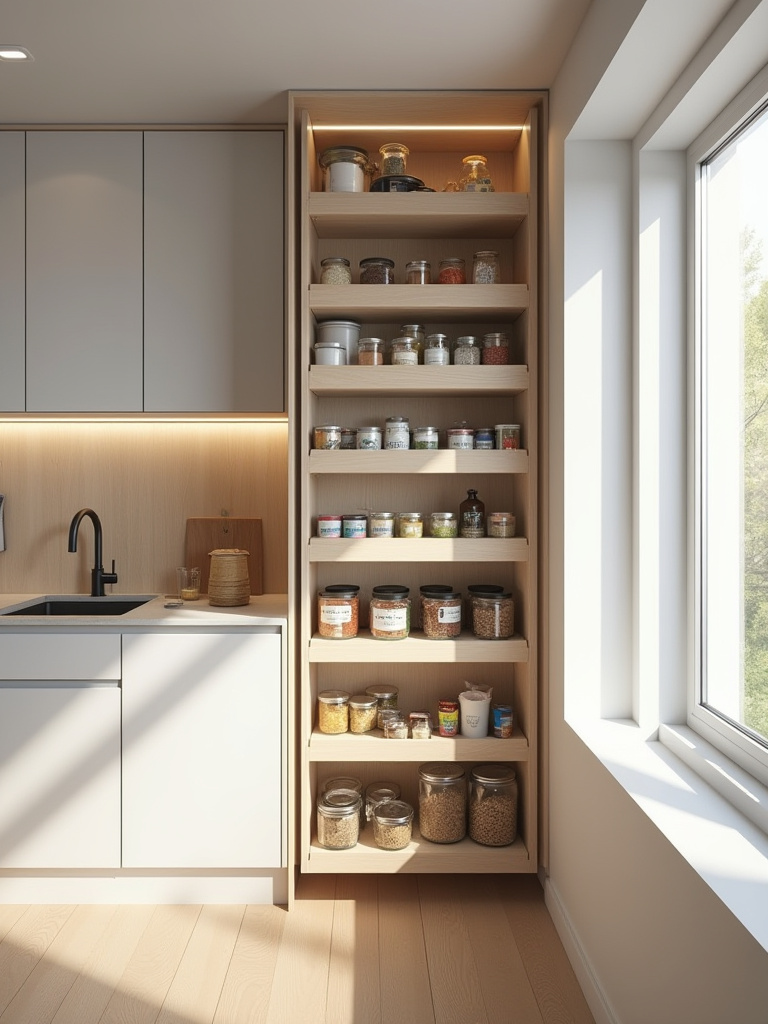
This brings a quiet integrity to your storage. You can see what you have, honor it by using it, and avoid the waste that comes from forgetting. It is a way of respecting not just your space, but the food you store within it. It transforms a moment of searching into a moment of calm selection.
The machines we use can be the loudest, most aggressive elements in a kitchen. We can choose differently.
8. Choose Slimline and Compact Kitchen Appliances
The common wisdom is to get the biggest and most powerful appliances you can afford. This is a philosophy of excess. I encourage a philosophy of sufficiency. What is truly needed for the way you live? A large oven for a single person who rarely bakes is not a luxury; it is a waste of space and energy.
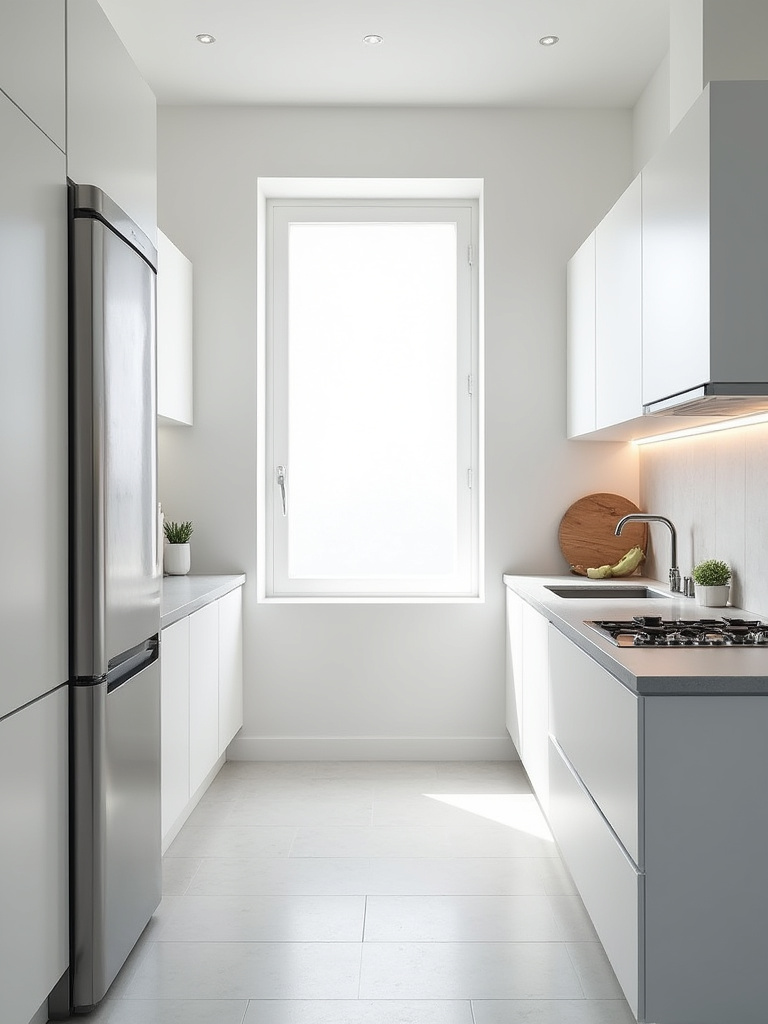
Choose appliances that are elegant in their efficiency. A slimline dishwasher, a two-burner induction cooktop, a smaller refrigerator—these are not compromises. They are precise, intentional choices that return precious space to you. They create less visual noise and perform their function beautifully. Honor your space by not overwhelming it with machines larger than your needs demand.
Even the most awkward of spaces holds the potential for order. Let us look at the space beneath the sink.
9. Utilize Under-Sink Organizers for Cleaning Supplies
The area under the sink is often a metaphor for chaos—a tangle of pipes and bottles, damp and forgotten. To bring order to this space is a powerful act. It is to say that even the hidden, utilitarian corners of my home deserve care and harmony. Using simple organizers, pull-out trays, and tiered shelves here is not just practical; it is a practice of mindfulness.
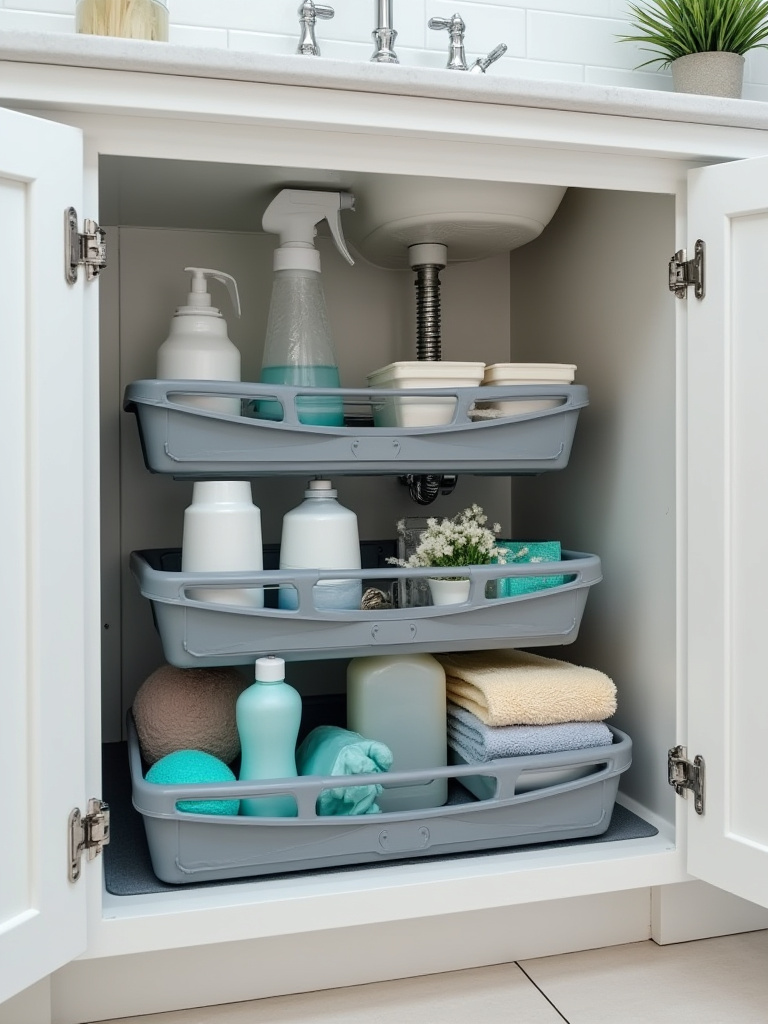
When you bring order to the unseen, it has a subtle effect on your entire state of being. You know that even in the darkest cabinet, there is order. This creates a foundation of calm that extends throughout the kitchen. It removes a small, daily friction from your life, and the sum of those removed frictions is peace.
We continue this path of finding harmony in our tools and hidden spaces, refining our relationship with the objects we use every day.
Smart Storage & Appliance Selection Strategies (Part 2)
The philosophy deepens as we look at the very shape of our cookware and the overlooked surfaces of our cabinets. Every detail is an opportunity for serenity.
10. Invest in Nesting or Stackable Cookware Sets
Consider the chaotic clatter of mismatched pots and pans. Now, picture a single, perfect stack. A set of nesting cookware is a poem of efficiency. Each piece is designed to fit perfectly within the next, creating a single, solid form from many parts. It is a beautiful example of harmony and order.
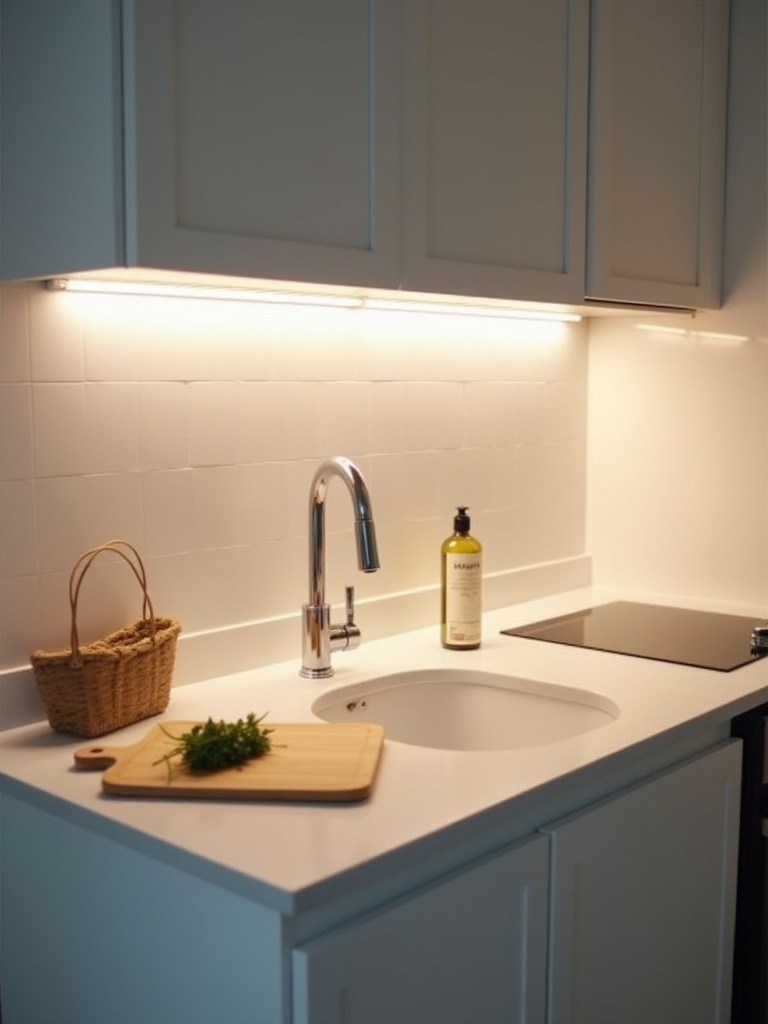
Storing them becomes a small, satisfying ritual. There is no struggle, no precariously balanced tower. There is only a simple, quiet act of placing each piece in its intended home. This not only saves an incredible amount of physical space, but it also saves mental space. The visual chaos is gone, replaced by a simple, elegant column.
Having brought order to our cabinets’ contents, let us look at the cabinets themselves, for even their doors hold untapped potential.
11. Implement Door-Mounted Spice Racks & Bins
The back of a cabinet door is a forgotten place. It is a void. By mounting a slim rack for spices here, we give this void a purpose. It is the ultimate expression of using space intelligently. It brings your spices out of the darkness of a cabinet and into the light, ordering them in a neat row where they can be seen and used.
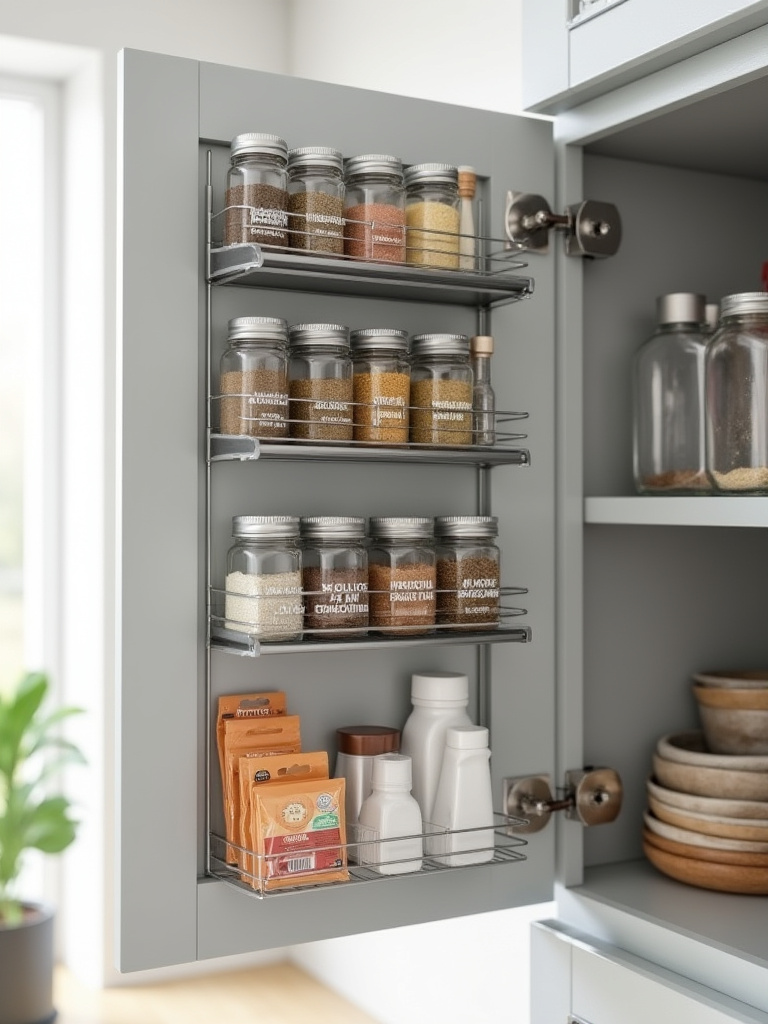
This is a beautiful, simple solution. It clears a shelf, making room for other things, and transforms a jumble of small jars into an organized, visible palette for your cooking. This small act can free up a surprising amount of shelf space, embodying the principle of finding abundance in overlooked places.
With the physical objects of the kitchen brought into a state of harmony, we now turn our attention to the most ethereal element: the light.
Enhancing Ambiance Through Lighting & Aesthetics (Part 1)
Light is not a utility. It is a material. We can use it to sculpt space, to create mood, and to guide the eye. In a small kitchen, how you shape the light is as important as how you arrange the furniture.
12. Brighten Work Zones with Under-Cabinet Lighting
The fatal flaw of a single overhead light is the shadow it casts. When you stand at the counter, your own body blocks the light, casting your workspace into darkness. This is a subtle but constant source of strain. Under-cabinet lighting solves this with grace. It is a hidden source of light that washes your countertops in a clean, clear glow.
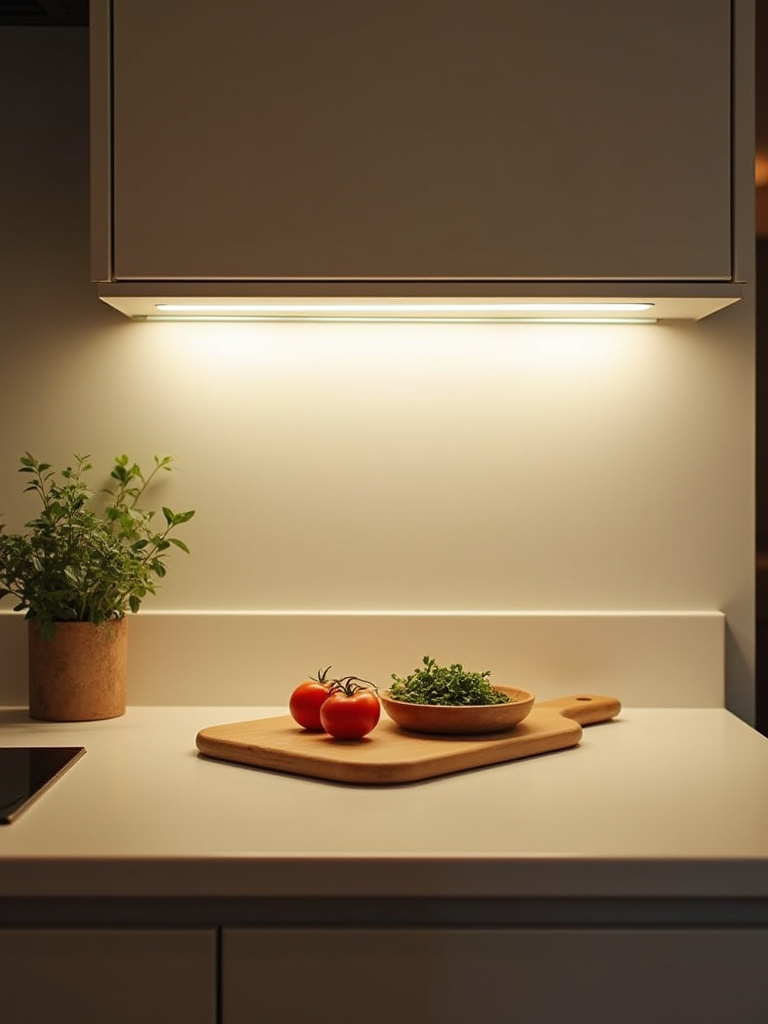
This light is not just functional; it is atmospheric. It creates pools of warmth and focus, making the kitchen feel inviting. The light is soft, close, and intimate. It turns the simple act of chopping vegetables into a focused, almost meditative practice, free from the harsh glare and shadows of overhead fixtures.
This principle of focused light can be applied with even greater precision to our most critical workspaces.
13. Add task lighting Above Sinks and Prep Areas
The sink and the primary prep area are places of intense activity. They deserve their own dedicated light. A single, elegant pendant light over a small island or a focused downlight above the sink defines that space and dedicates energy to it. It signals that this is a place for intentional work.
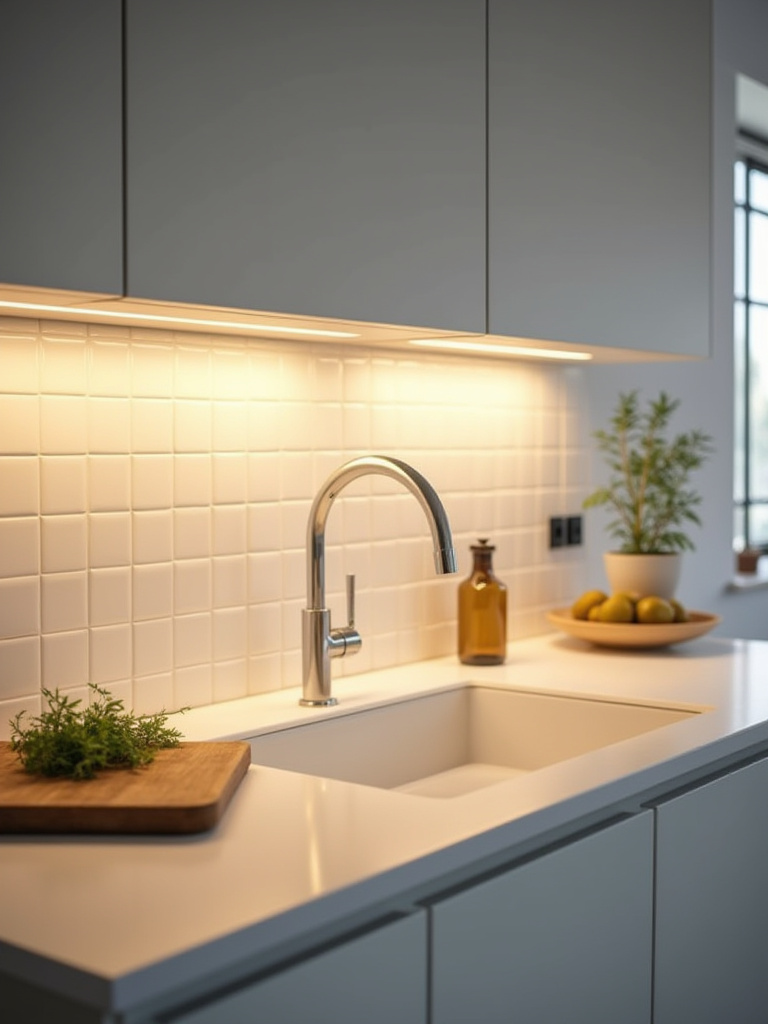
This is what we call layering light. You have the general, ambient light of the room, and then you have these focused pools of task lighting. This creates visual interest and depth. Your kitchen no longer feels like one flatly lit box, but a dynamic space with zones of purpose and areas of quiet rest.
While we add our own light, we must never forget the most important light source of all—the one that connects us to the world outside.
14. Use Sheer or Minimal Window Treatments for Natural Light
A window is a connection to the cycles of nature. To cover it with heavy, opaque blinds is to sever that connection. It is to trap yourself inside. In a small space, this can feel suffocating. The solution is to filter the light, not to block it.
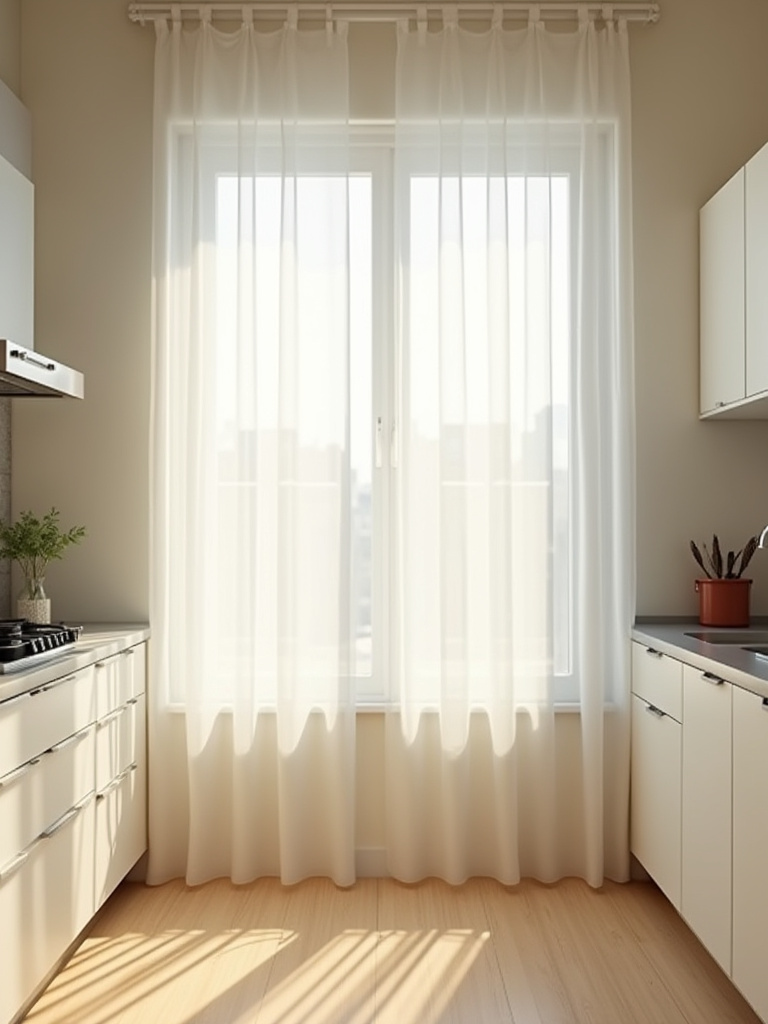
Use sheer linen panels or a simple translucent roller blind. These materials soften the harsh glare of the direct sun while allowing the light to pour through, filling the space with a gentle, diffused glow. This maintains your connection to the outside world, allows you to sense the passing of the day, and makes the room feel airy and boundless.
We can use our ingenuity to multiply this precious natural light, sending it into every corner.
15. Incorporate a Mirror Splashback for Depth
As we discussed with reflective surfaces, a mirror creates an illusion of depth. When used as a backsplash, its effect is magnified. It captures and reflects the entire kitchen, the movement of the cook, the light from the window, and the glow from the lamps. It effectively erases a wall, replacing it with a window into a duplicate room.
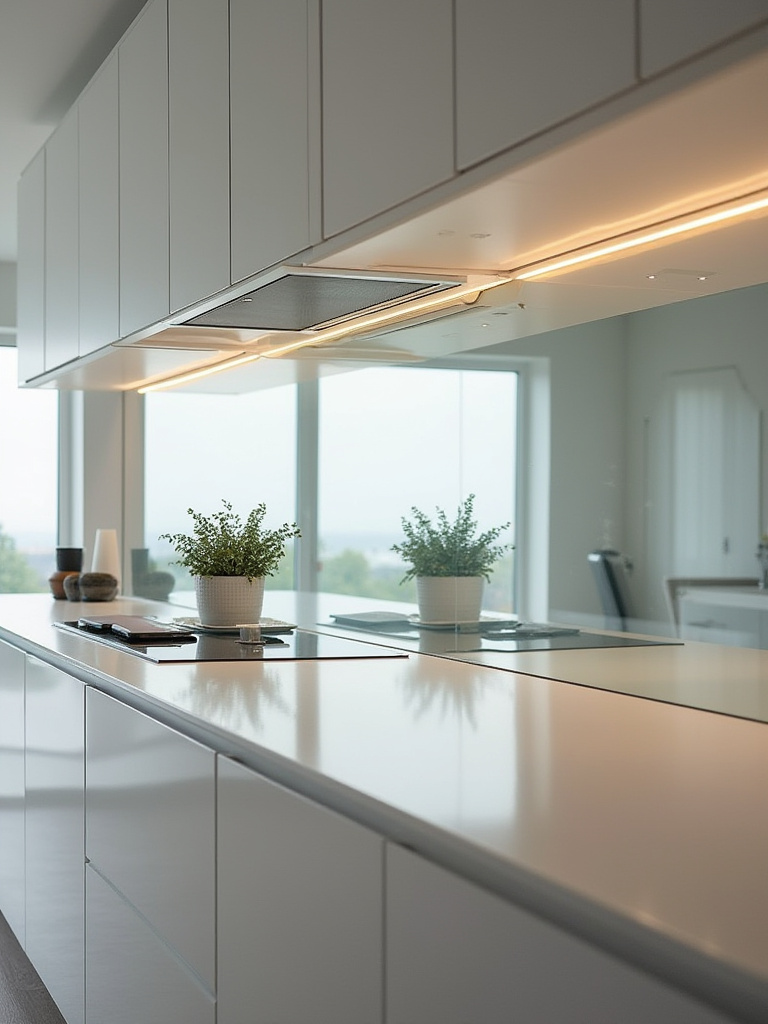
This is perhaps the most powerful single technique for making a small kitchen feel vast. Choose a lightly smoked or bronze-tinted mirror to add warmth and prevent the reflection from feeling too sterile. The result is a kitchen that feels alive, dynamic, and endlessly spacious.
The light now fills the room, both natural and crafted. It is time to add the final layers of personality and beauty.
Enhancing Ambiance Through Lighting & Aesthetics (Part 2)
This is where the soul of the owner enters the space. It is about curated, personal expression—not about adding clutter, but about infusing the essential with beauty.
16. Curate Displays on Open Shelving and Counters
Remember our principle of ma, the space around the object. This is where it is practiced. Open shelves are not for storage; they are for display. A curated display is not a random collection; it is a thoughtful composition. Group items in threes or fives. Vary their height and texture. A rough ceramic pitcher, a smooth stack of bowls, a delicate glass.
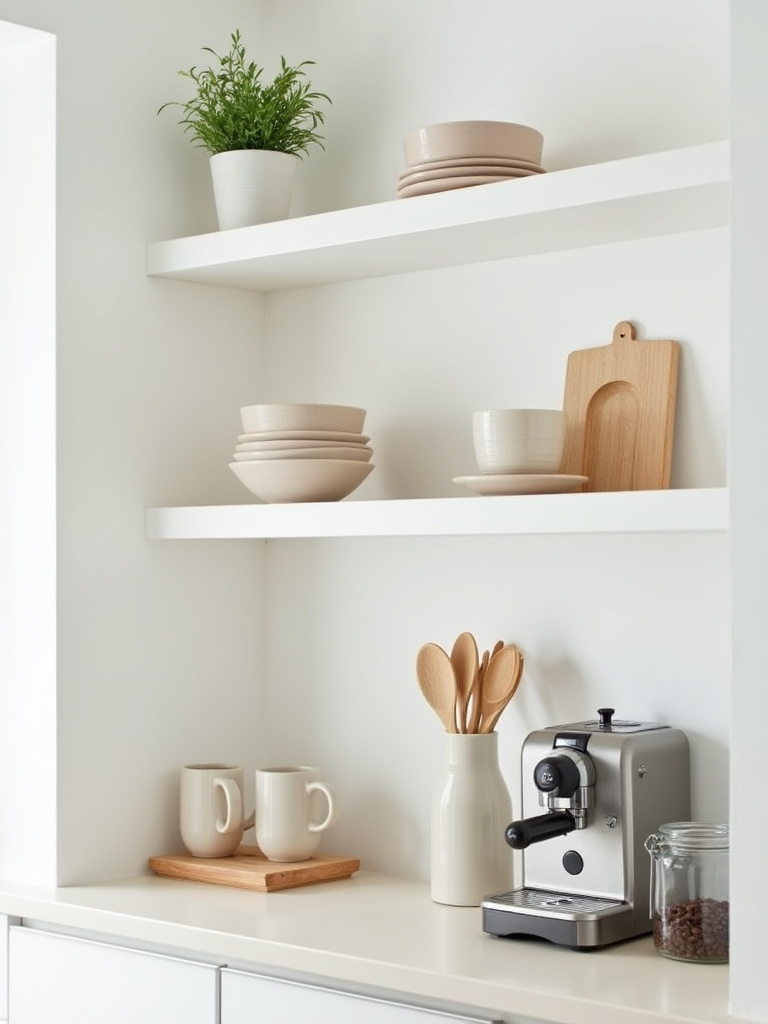
Leave space between the groupings. This negative space gives the eye a place to rest. It allows each object to be seen and appreciated for its unique form. The goal is to create a series of small, serene still-lifes that bring you quiet joy whenever your gaze falls upon them.
While we value permanence and quality, there is also beauty in the ephemeral, the adaptable touch of personality.
17. Apply Removable Wallpaper for a Patterned Focal Point
For those who feel a kitchen of neutral tones lacks energy, a single accent of pattern can be a powerful statement. Removable wallpaper offers a way to do this without permanent commitment. Think of it like changing an ikebana floral arrangement with the seasons. A small wall, the back of a set of shelves, or the front of an island can become a canvas.
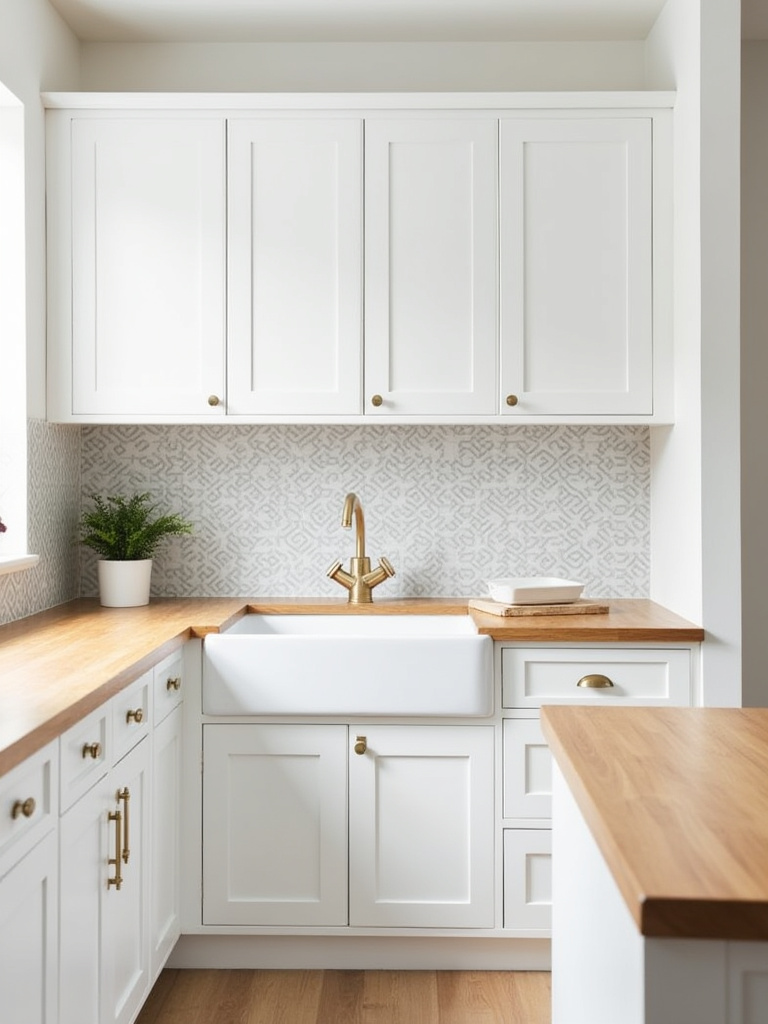
Choose a pattern from nature—a subtle bamboo leaf motif, a soft wave pattern, or a simple geometric inspired by shoji screens. This adds a layer of visual interest and personality, creating a focal point that draws the eye. And when you are ready for a change, it can be removed, leaving the calm canvas ready for a new expression.
The space is now beautiful and functional. But a home is a living thing, and so it must contain life.
Personal Touches & Continuous Optimization (Part 1)
A kitchen is not a static museum piece. It is a space for living, and it must feel alive. These final touches are about infusing it with vitality and ensuring it adapts with you over time.
18. Introduce Small, Live Plants for Freshness
A connection to nature, or shizen, is essential for a peaceful spirit. A small kitchen is the perfect place to nurture this connection. A single pot of herbs on the windowsill—basil, shiso, or mint—brings not only life and color but also fragrance and flavor to your cooking. It is a living, functional part of your culinary world.
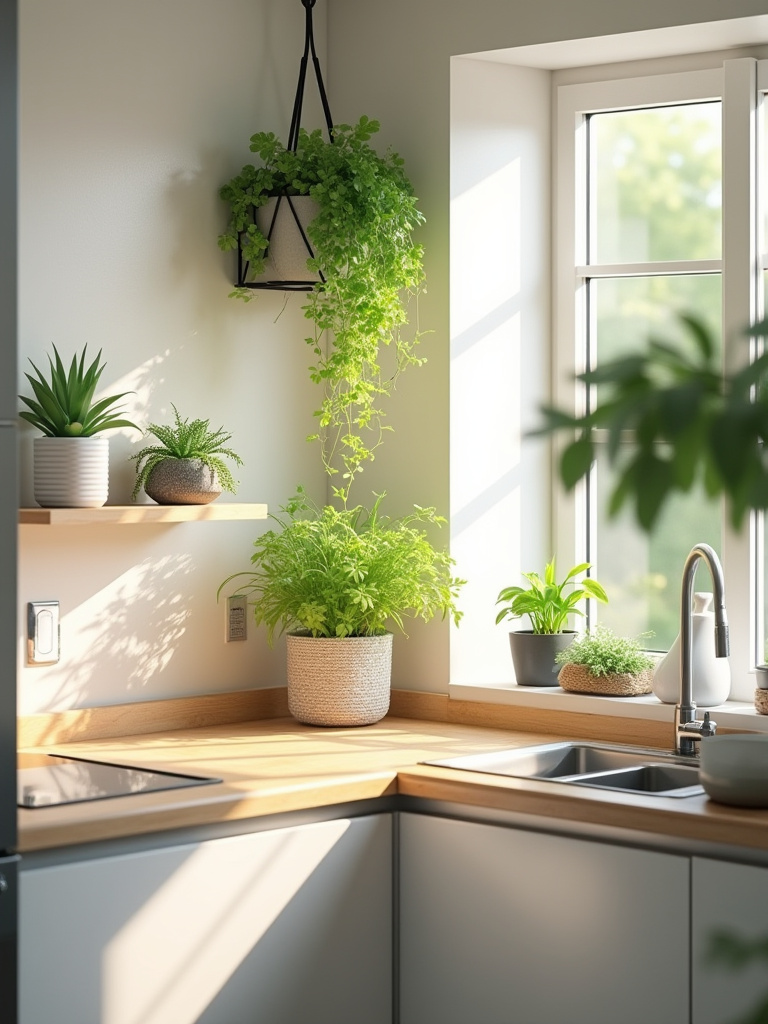
A small, elegant orchid or a trailing pothos on a high shelf can also soften the hard lines of a kitchen and purify the air. Tending to a plant, however small, is a daily act of mindfulness. It connects you to the slow, patient rhythms of the natural world, a perfect antidote to the rush of modern life.
Even our most common tools can be objects of beauty, if we choose them with care.
19. Display Visually Appealing Everyday Utensils
This is the heart of wabi-sabi: finding profound beauty in humble, imperfect, and everyday things. Instead of hiding your tools away, choose them for their beauty and display them proudly. A set of well-worn wooden spoons in a simple ceramic crock has more soul and warmth than a drawer full of plastic.
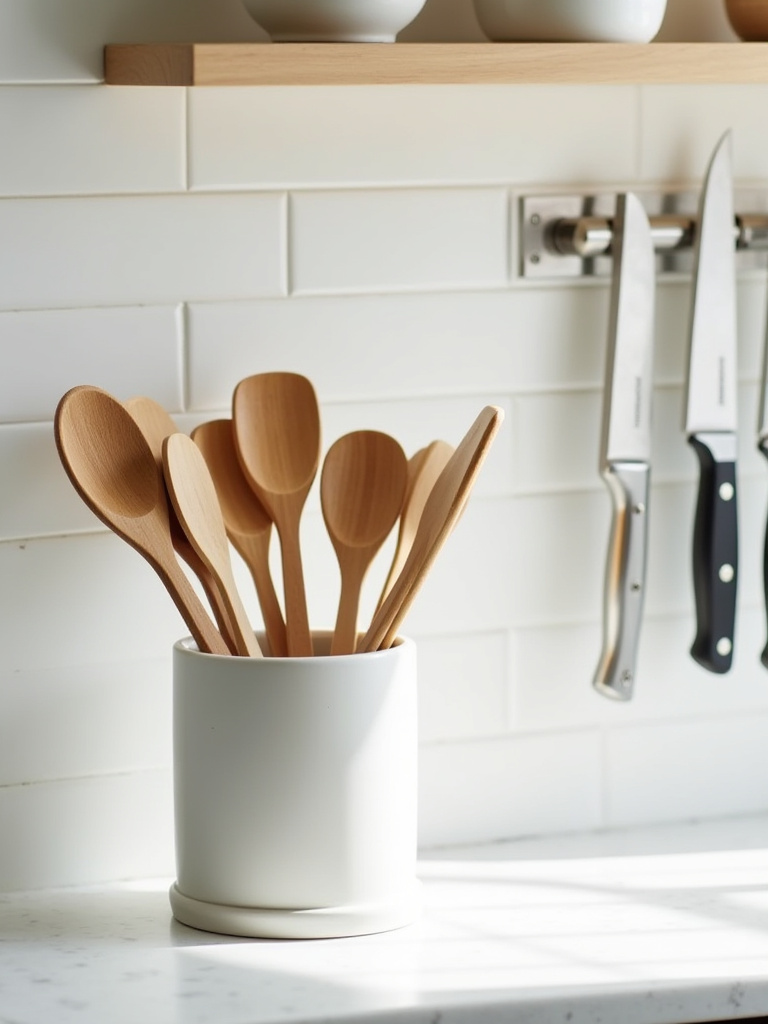
A magnetic strip holding a few good-quality carbon steel knives shows not just the tools, but their potential. The patina they develop over time tells a story of meals cooked and shared. By elevating these everyday objects into a display, you are celebrating the beauty of utility and the simple, honest materials of the earth.
For those tools that are purely functional, their place is out of sight, to preserve the calm.
20. Utilize Compact Gadget storage solutions
The modern kitchen is plagued by an invasion of single-purpose gadgets. The avocado slicer, the banana keeper, the electric can opener. These objects create visual and mental clutter. First, question if you truly need them. Often, a good knife can do the work of ten gadgets.
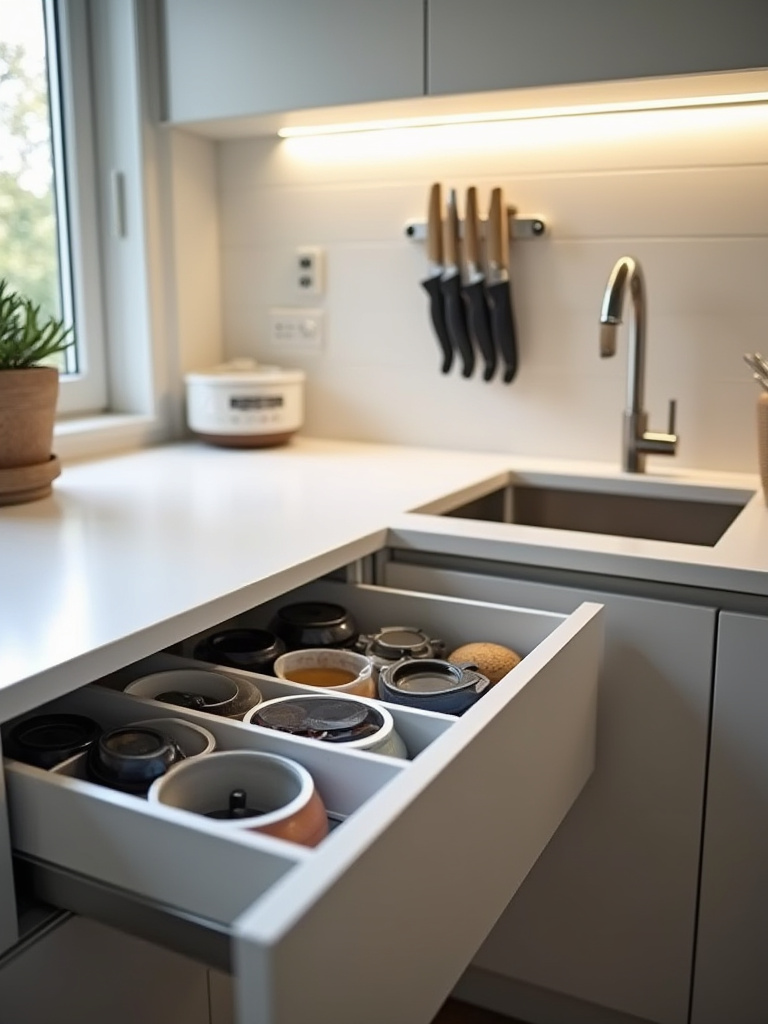
For those you must keep, their place is not on the counter. Use drawer organizers, cabinet door caddies, and pull-out trays to give each one a designated home, hidden from view. The act of cooking begins with a clear counter and a clear mind. When your tools are organized but out of sight, you can begin your work with a sense of peace.
This organization is not random; it should follow the natural flow of your movements.
21. Establish Organized Zones for Kitchen Activities
A well-designed kitchen is like a dance. Your movements should be fluid, efficient, and intuitive. This is achieved by creating zones. Your “brewing zone” might have the kettle, tea, coffee, and mugs all in one place. Your “prep zone” will have cutting boards, knives, and mixing bowls near a clear stretch of counter. Your “cooking zone” will have oils, spices, and utensils right next to the stove.
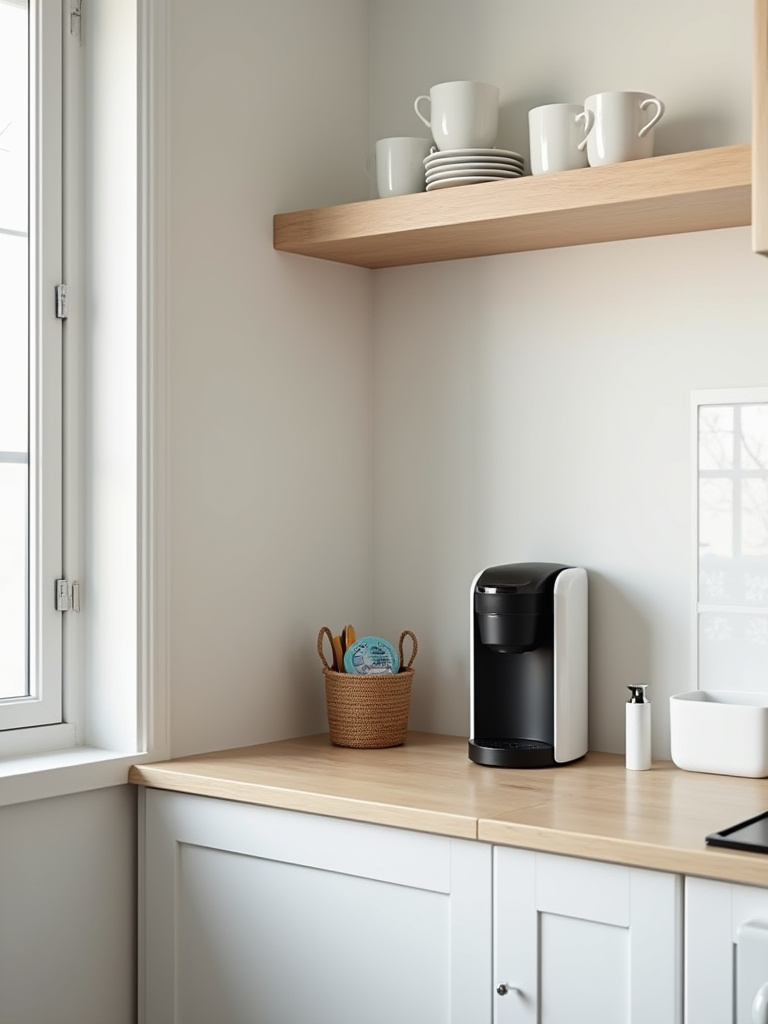
By grouping items according to their function, you create a seamless workflow. You are not crossing the kitchen for a spoon, then back again for oil. Everything you need is at hand, right when you need it. This thoughtful organization turns cooking from a chaotic scramble into a graceful, meditative process.
And finally, the most important practice of all: the understanding that this work is never truly finished.
Personal Touches & Continuous Optimization (Part 2)
A home is not a static project to be completed, but a living partner in your life’s journey. It must be tended to. This final principle is about the ongoing practice of keeping your space in harmony.
22. Periodically Declutter and Re-evaluate Layout for Efficiency
Life changes. Your needs change. The perfect layout for you today may not be the perfect layout in a year. See your kitchen not as a fixed design, but as an evolving space. Once every season, take a few moments to re-evaluate. Is there a friction point in your daily routine? Is there a drawer that has become cluttered again?
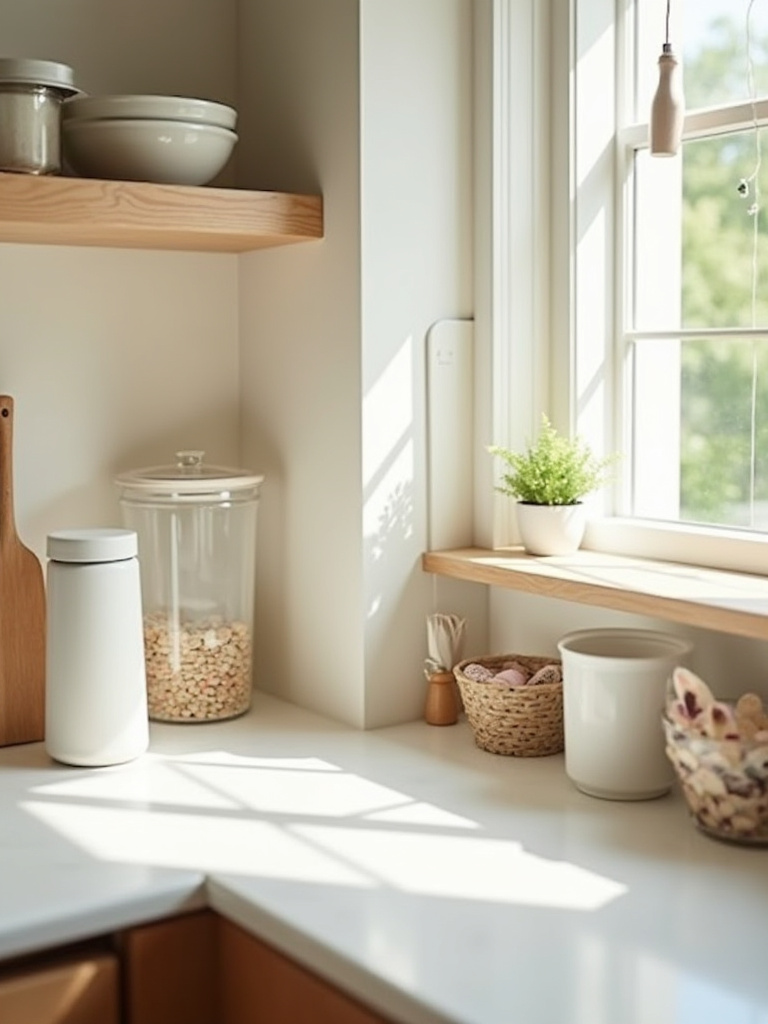
This is not a failure. It is simply a sign that it is time for a small adjustment. This continuous, gentle optimization is the truest form of respect for your home. It ensures that it is always serving you, always a place of calm and ease. This is the practice, and the practice itself is the goal.
Conclusion
You see now, I hope, that designing a small kitchen is not about following a list of tips. It is about embracing a philosophy. It is a journey away from the mindset of “more” and toward the peace of “enough.” Your small kitchen is not a problem to be solved; it is an opportunity to live with greater intention. The constraints of the space are not walls, but guides, leading you toward a more mindful way of being.
Choose one of these ideas not because it is clever, but because it resonates with your spirit. Begin there. The goal is not to create a perfect, magazine-ready kitchen overnight. The goal is to begin the practice of creating a home that nourishes you, body and soul. Let your kitchen be a quiet testament to the beauty found not in abundance, but in elegant, thoughtful simplicity.
